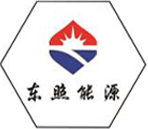
Dec . 05, 2024 10:36
Back to list
صمام تنظيم الضغط
Understanding Pressure Regulating Valves Their Importance and Applications
Pressure regulating valves (PRVs) are essential components in various industrial and residential applications that require precise control of pressure in fluid systems. These valves ensure that the pressure of incoming fluids is maintained at a predetermined level, which is crucial for the safe and efficient operation of equipment and processes. In this article, we will explore the functionality, types, benefits, and applications of pressure regulating valves.
What is a Pressure Regulating Valve?
A pressure regulating valve is a type of valve that automatically modulates the flow of a fluid to maintain a desired downstream pressure, regardless of fluctuations in upstream pressure or flow rate. By adjusting the flow in response to changing conditions, PRVs protect equipment, enhance system efficiency, and improve overall safety.
How Do Pressure Regulating Valves Work?
The operation of a pressure regulating valve is relatively straightforward. The valve uses an internal mechanism, typically a spring and diaphragm assembly, to sense the downstream pressure. When the downstream pressure exceeds the set point, the valve partially closes to restrict flow, reducing pressure. Conversely, when the pressure falls below the set point, the valve opens to allow more flow, increasing pressure. This self-regulating feature enables consistent pressure maintenance, reducing the risk of pressure-related issues.
Types of Pressure Regulating Valves
1. Direct-acting Pressure Regulators These are the simplest form of PRVs, where the diaphragm directly interacts with flow to manage pressure. They are ideal for low-flow applications.
2. Pilot-operated Pressure Regulators These valves use a secondary pilot system to control the main valve. They are more adaptable to varied flow rates and are suitable for high flow and high-pressure applications.
3. Electronic Pressure Regulators Utilized in advanced systems, electronic pressure regulators use sensors and controllers to maintain pressure precisely. They allow for remote monitoring and adjustment, making them popular in automated and smart systems.
.
1. Protection of Equipment By maintaining consistent pressure, PRVs help prevent damage to pipes, pumps, and other components caused by pressure surges or drops.
صمام تنظيم الضغط

2. Efficiency Optimization Efficient pressure management leads to better performance of the entire system, reducing energy consumption and operational costs.
3. Safety Enhancement By preventing overpressurization, PRVs play a vital role in ensuring the safety of personnel and equipment, mitigating risks associated with high-pressure operations.
4. Minimal Maintenance Most pressure regulating valves are designed to operate efficiently with minimal maintenance, further reducing operational downtime.
Applications of Pressure Regulating Valves
Pressure regulating valves are utilized in a variety of sectors, including
1. Water Supply Systems In municipal water systems, PRVs ensure that water is delivered at safe, consistent pressure, preventing pipe bursts and ensuring efficient distribution.
2. Oil and Gas Industry PRVs regulate pressure in pipelines and refining processes, maintaining optimum conditions for safety and productivity.
3. HVAC Systems In heating, ventilation, and air conditioning systems, PRVs regulate water and gas pressure for efficient heating and cooling.
4. Pharmaceuticals and Food Processing In these industries, maintaining consistent pressure is crucial for quality and safety standards, and PRVs ensure compliance with regulatory requirements.
5. Industrial Processes Many manufacturing processes rely on precise pressure control to ensure product quality and prevent operational disruptions.
Conclusion
Pressure regulating valves are vital components in managing fluid systems across multiple industries. Their ability to maintain consistent pressure protects equipment, enhances safety, and promotes operational efficiency. As technology advances, the development of more sophisticated pressure regulating solutions continues to evolve, opening new possibilities for optimizing fluid management in increasingly complex systems. Understanding the significance and functionality of PRVs can help engineers and operators make informed decisions that lead to better performance and safer operations.
Next:
Latest news
-
Safety Valve Spring-Loaded Design Overpressure ProtectionNewsJul.25,2025
-
Precision Voltage Regulator AC5 Accuracy Grade PerformanceNewsJul.25,2025
-
Natural Gas Pressure Regulating Skid Industrial Pipeline ApplicationsNewsJul.25,2025
-
Natural Gas Filter Stainless Steel Mesh Element DesignNewsJul.25,2025
-
Gas Pressure Regulator Valve Direct-Acting Spring-Loaded DesignNewsJul.25,2025
-
Decompression Equipment Multi-Stage Heat Exchange System DesignNewsJul.25,2025

